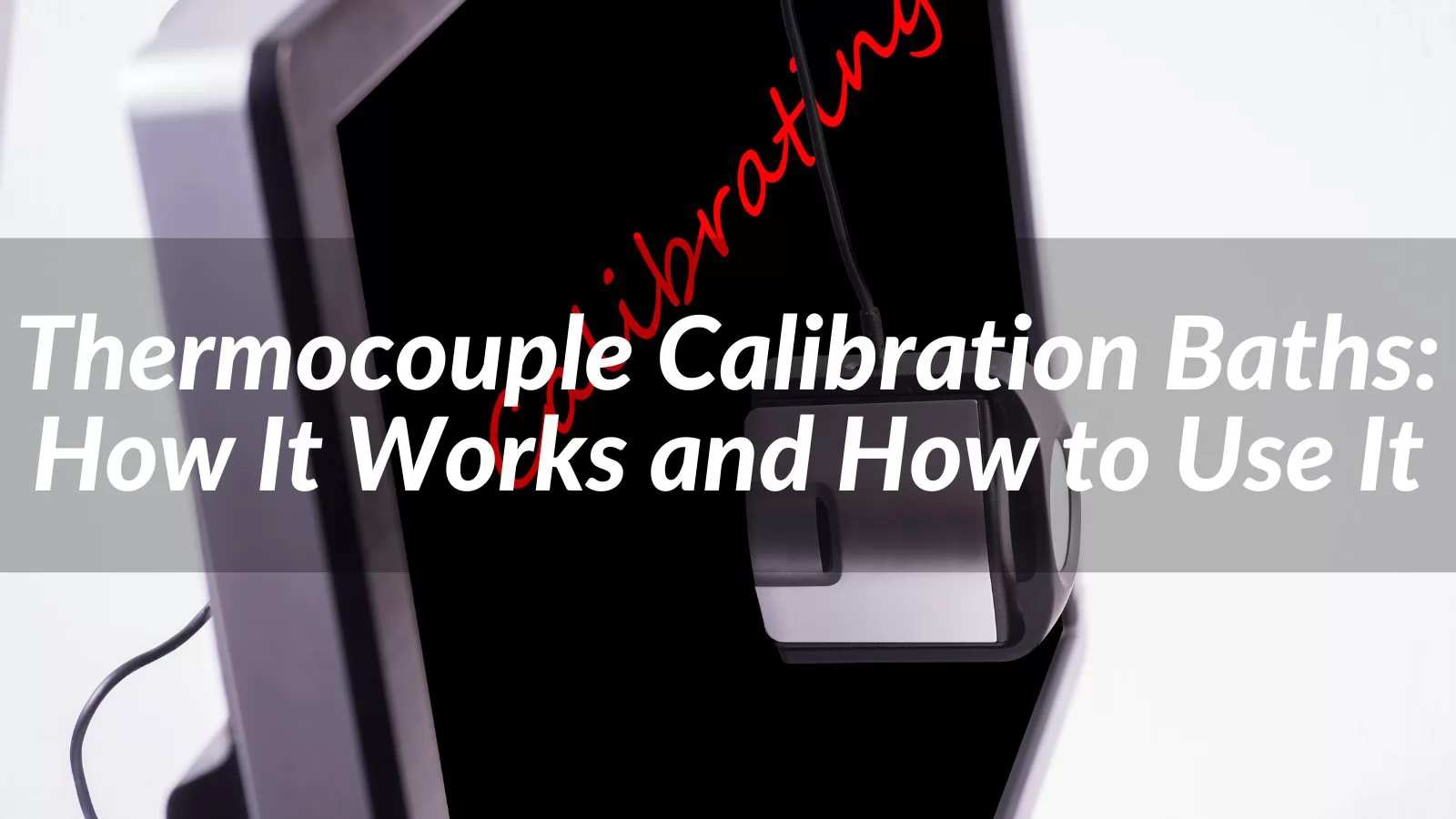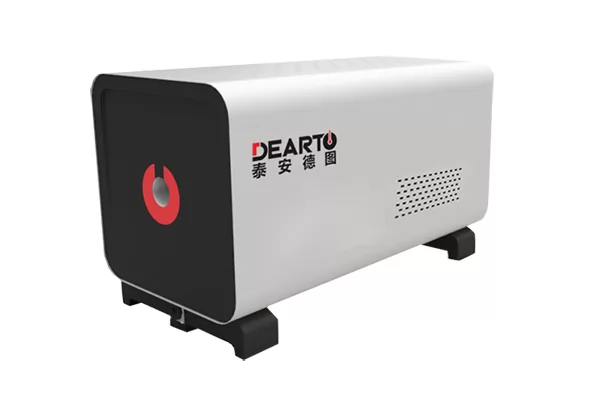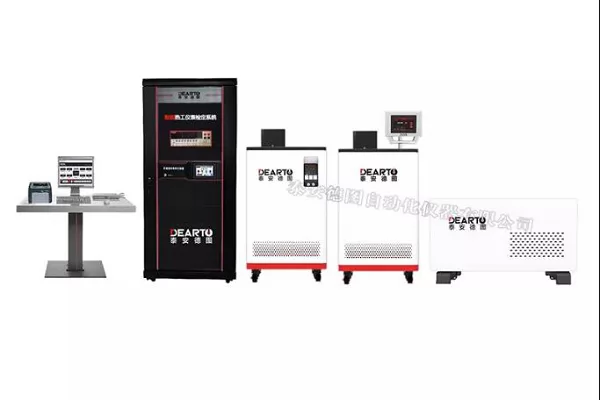
The exact calibration and testing of thermocouples, which are widely used for temperature monitoring in several industries, requires the use of a thermocouple calibration bath. These calibration baths offer a regulated setting for precisely assessing thermocouple performance and features.
Thermocouples are temperature sensors that function according to the Seebeck phenomenon, which states that when two different metals are coupled at various temperatures, a voltage is produced. However, it is essential to regularly calibrate thermocouples against recognised temperature standards in order to ensure reliable temperature measurements.
| 1. | What is a Thermocouple Calibration Bath? |
|---|---|
| 2. | Working Principles of Thermocouple Calibration Baths: |
| 3. | Components and Features: |
| 4. | How to Use a Thermocouple Calibration Bath? |
| 5. | Conclusion |
What is a Thermocouple Calibration Bath?
A thermocouple calibration bath serves as a standardized reference system that enables the calibration of thermocouples by providing stable and accurately controlled temperatures. It creates a controlled temperature environment around the thermocouple, allowing technicians to evaluate the thermocouple's response at different temperature points.
By using a thermocouple calibration bath, the performance of a thermocouple can be assessed, and any deviations or inaccuracies in its readings can be identified. This ensures that the thermocouple provides reliable and precise temperature measurements in real-world applications.
What is a Thermocouple Calibration Bath?
| Product | Description |
|---|---|
| Dry Block Calibrator | A portable device used to calibrate temperature sensors by providing a stable and controlled temperature environment. |
| Calibration Bath | A bath filled with a temperature-controlled fluid, used for calibrating thermocouples and other temperature sensors through immersion. |
| Intelligent Multichannel Thermometer | An advanced thermometer capable of measuring temperature at multiple points simultaneously, suitable for monitoring calibration processes. |
| RTD and Thermocouple Automatic Calibration System | An automated system designed to calibrate both RTDs (Resistance Temperature Detectors) and thermocouples efficiently and accurately. |
| Multifunction Process Calibrator | A versatile device used to calibrate various process instruments, including temperature sensors like thermocouples, RTDs, and more. |
A thermocouple calibration bath is an essential tool in the field of temperature calibration, providing precise and reliable calibration for thermocouples and other temperature sensors. Each of these products plays a crucial role in ensuring accurate temperature measurements across different industries and applications.
A thermocouple calibration bath is an essential tool in the field of temperature calibration, providing precise and reliable calibration for thermocouples and other temperature sensors. Each of these products plays a crucial role in ensuring accurate temperature measurements across different industries and applications.
A thermocouple calibration bath is an essential tool in the field of temperature calibration, providing precise and reliable calibration for thermocouples and other temperature sensors. Each of these products plays a crucial role in ensuring accurate temperature measurements across different industries and applications.
A thermocouple calibration bath is an essential tool in the field of temperature calibration, providing precise and reliable calibration for thermocouples and other temperature sensors. Each of these products plays a crucial role in ensuring accurate temperature measurements across different industries and applications.
A thermocouple calibration bath is an essential tool in the field of temperature calibration, providing precise and reliable calibration for thermocouples and other temperature sensors. Each of these products plays a crucial role in ensuring accurate temperature measurements across different industries and applications.
Working Principles of Thermocouple Calibration Baths
Liquid calibration baths employ various components and mechanisms to achieve precise and stable temperature control for calibrating thermometers and temperature sensors.
a. Heating and Cooling Mechanisms:
Thermocouple calibration baths utilize heating and cooling mechanisms to reach and maintain specific temperature setpoints. These mechanisms can include electric heating elements, such as resistance heaters or Peltier devices, and refrigeration systems for cooling. The heating and cooling elements are controlled by the bath's temperature control system.
b. Temperature Control System:
Thermocouple calibration baths are equipped with a temperature control system that regulates the bath's temperature. This system typically includes a reference temperature sensor, such as a platinum resistance thermometer (PRT) or a thermistor, which accurately measures the bath's temperature. The measured temperature is then compared to the setpoint, and the control system adjusts the heating or cooling mechanisms to maintain the desired temperature.
c. PID Control:
Most modern thermocouple calibration baths utilize a proportional-integral-derivative (PID) control algorithm. PID control continuously adjusts the heating or cooling rate based on the difference between the measured temperature and the setpoint. This algorithm ensures precise and stable temperature control by dynamically adjusting the heating or cooling power.
d. Bath Chamber Design:
The bath chamber of a thermocouple calibration bath is designed to provide a stable and uniform temperature environment. It is typically made of high-quality materials with excellent thermal conductivity to ensure efficient heat transfer. The chamber may incorporate insulation to minimize heat loss and improve temperature stability.
e. Safety Features:
Thermocouple calibration baths often include safety features to protect the bath and prevent overheating. These features can include temperature limits, alarms, and automatic shutdown mechanisms in case of temperature deviations or system malfunctions.

Thermocouple Calibration Furnace
Scope of application: S / R short thermocouple, short type inexpensive metal thermocouple verification/calibration

Standard Type Thermocouple Verification System
During the verification process, manual intervention is unnecessary.
Components and Features
1. Bath Chamber:
The thermocouples are submerged in the calibration bath's primary vessel, the bath chamber. It is made to offer an atmosphere with a constant and consistent temperature. A corrosion-resistant coating may be present, and the chamber is generally constructed of materials with high heat conductivity, such as stainless steel.
2. Heating Elements:
The temperature of the bath is increased by heating components like resistance heaters. They are positioned thoughtfully all throughout the bath chamber to guarantee even heating. To reach the intended setpoint, the temperature control system regulates the heating components.
3. Cooling Mechanism:
In some calibration baths, a cooling mechanism is incorporated to achieve lower temperature ranges. This can be a refrigeration system or a heat exchanger that removes heat from the bath, allowing for precise control of temperatures below ambient.
4. Temperature Sensors:
Thermocouple calibration baths employ temperature sensors to measure and monitor the bath's temperature accurately. The most common sensors used are platinum resistance thermometers (PRTs) or thermistors. These sensors provide precise temperature readings for the control system to adjust the heating or cooling mechanisms.
5. Control Interfaces:
Thermocouple calibration baths are equipped with user-friendly control interfaces. These interfaces allow operators to set the desired temperature, monitor the actual temperature, and make adjustments if necessary. The control interfaces can include touchscreens, digital displays, buttons, and knobs for temperature control and programming.
6. Stirring Mechanism:
Some calibration baths feature a built-in stirring mechanism to enhance temperature uniformity within the bath chamber. This ensures that the thermocouples are exposed to a consistent temperature throughout the calibration process.
7. Insulation:
Insulation is often incorporated into the design of thermocouple calibration baths to minimize heat loss and improve temperature stability. Insulating materials are placed around the bath chamber and other critical components to prevent external temperature fluctuations from affecting the calibration process.
8. Safety Features:
To ensure safe operation, thermocouple calibration baths are equipped with various safety features. These can include temperature limits with audible and visual alarms, automatic shutdown in case of temperature excursions, and electrical safety mechanisms to prevent overheating or electrical faults.
How to Use a Thermocouple Calibration Bath?

Using a thermocouple calibration bath requires careful attention to detail and adherence to proper procedures. Here is a step-by-step guide on how to effectively use a thermocouple calibration bath:
Step 1: Preparation
Make sure the calibration bath is tidy and clear of any pollutants or dirt.
Depending on the temperature range needed for calibration, fill the bath chamber with an appropriate calibration medium, such as a suitable liquid or dry-block insert.
Make sure all electrical connections are tightened and connect the bath to a reliable power source.
Step 2: Setting the Temperature
Power on the calibration bath and allow it to stabilize for a sufficient amount of time, usually as specified by the manufacturer.
Set the desired temperature on the control interface, taking into account the specific calibration requirements of the thermocouples being calibrated.
Pay attention to any temperature ramp rates or stabilization times recommended for accurate calibration.
Step 3: Immersion of Thermocouples
Ensure that the thermocouples to be calibrated are properly prepared and in good condition.
Immerse the thermocouples in the calibration medium, ensuring that the sensing junctions are fully submerged and properly positioned.
Avoid any contact between the thermocouples or with the bath chamber walls to prevent heat transfer errors.
Step 4: Monitoring and Adjustment
Monitor the actual temperature of the bath using the temperature display or interface. Ensure it matches the desired setpoint.
Allow sufficient time for the thermocouples to reach thermal equilibrium with the calibration bath. This time may vary depending on the specific thermocouple types and sizes.
If necessary, make fine adjustments to the temperature setpoint to ensure accuracy. Use the controls provided on the calibration bath.
Step 5: Calibration Process
Follow the calibration procedure specified by the thermocouple manufacturer or applicable standards.
Record the temperature readings from the calibration bath and the corresponding output voltages or temperature readings from the thermocouples.
Repeat the process for multiple temperature points within the desired calibration range.
Step 6: Data Analysis and Documentation
Analyze the calibration data obtained from the thermocouple calibration bath, comparing the reference values with the measured values.
Calculate any deviations or errors observed during calibration and determine the calibration uncertainties.
Document the calibration results, including the calibration dates, temperature points, deviations, and uncertainties.
By following these steps, technicians can effectively utilize a thermocouple calibration bath to ensure accurate calibration of thermocouples. It is important to consult the manufacturer's guidelines and specific procedures for the calibration bath being used.
Conclusion
Thermocouple calibration baths play a crucial role in ensuring accurate and reliable temperature measurements by calibrating thermocouples against known temperature references. Understanding how these baths work and how to use them effectively is essential for technicians and engineers involved in temperature calibration processes.
By comprehending the working principles, components, and features of thermocouple calibration baths, technicians can operate them proficiently. Adhering to proper procedures, including preparation, temperature setting, immersion of thermocouples, monitoring, and data analysis, will help achieve accurate calibration results.
If you have other questions, please contact us!



